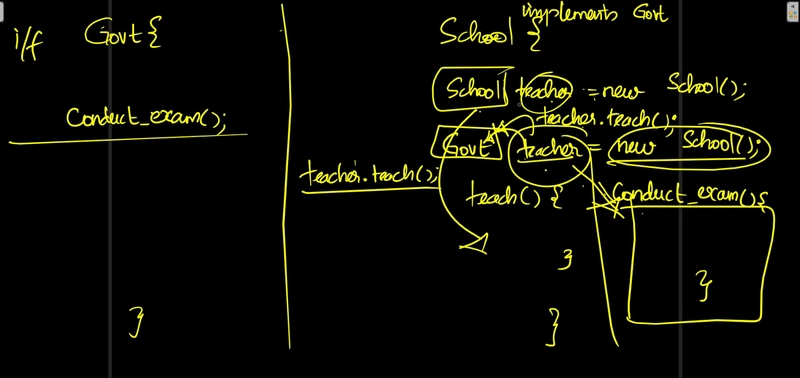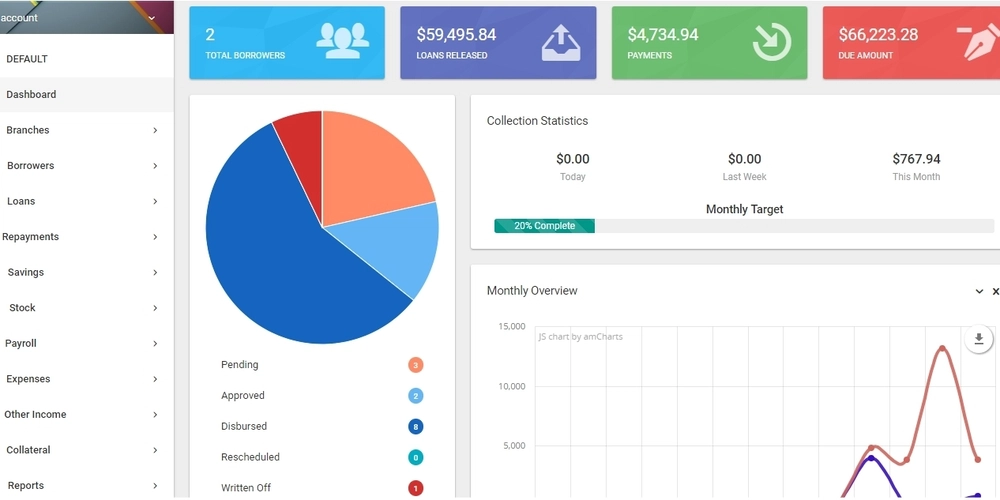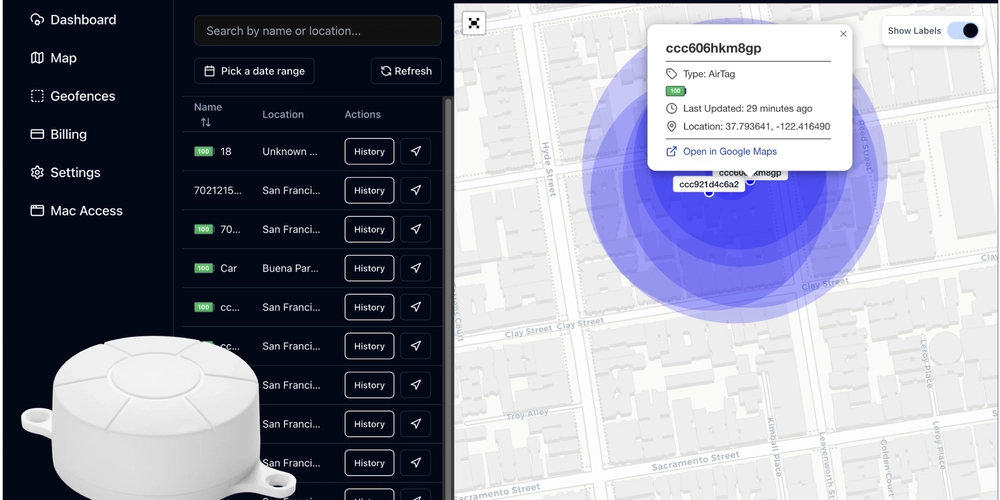Functional Programming in Python: Leveraging Lambda Functions and Higher-Order Functions
Writing several lines of code for a computer program instructs the computer on how to solve a problem or achieve a particular task by executing the code. Without this instruction, the computer is clueless about how to solve the problem. It’s relieving to know we can solve problems with a computer by writing several lines of code, sometimes hundreds. Now, imagine that you have been saddled with the responsibility of solving repetitive programming tasks several times a day. Don’t tell me you intend to keep writing the several lines of code that make up the program every time to solve your tasks. Come on, be a smart programmer, modularize your code, and use functions! Functional programming is a programming paradigm that involves organizing your code into functions. When programs built with this paradigm run, they are treated as a chain or connection of several other functions. This programming paradigm treats functions as first-class citizens — this implies that functions can be passed as arguments, returned from other functions, and, lastly, assigned to a variable. In this article, we’ll explore the principles of functional programming in Python, focusing on lambda functions and higher-order functions to simplify your code and boost productivity. Prerequisite This article is suitable for beginners in Python programming who have basic knowledge and wish to learn in-depth about functions. What are Functions Functions in programming refer to a block of code that encapsulates or hides the inner implementation of the solution to a specific task or problem. A function is designed to solve a specific task; there is no one-size-fits-all approach. There has to be one function for a specific task. A function takes in an argument, processes it, and may return a result or perform an action without returning any value. With that being said, let’s move on to the different types of functions available in Python. Types of Functions in Python There are several types of functions in Python, but this article will focus on Lambda, user-defined, and higher-order functions. User-defined functions: These are functions created by the programmer to perform a specific operation. They usually follow the standard function paradigm structure. def say_hello(name): return f"Hello, {name}!, welcome." Built-in functions: They are functions that come with Python, you don’t have to define them because there is already an abstracted implementation. You just go ahead and use it in your code. Example: print(), len(), sum(). Special (Magic/Dunder) Functions: These are special functions that are built into Python; they have double underscores (__) in their names, and they are used in Python to perform special operations. Lambda functions: They are also known as anonymous functions. They are single-expression functions created using the lambda keyword. They are used for simple operations. Higher-order functions: These are functions that take other functions as arguments or return other functions. Examples are: filter(), reduce(), and map(). Anatomy of a typical Python function """ Module Docstring """ def function_name(parameter): """ Function Docstring """ return f"you passed {parameter}, this function is used for demonstration purposes." The code snippet above shows the various parts of a typical Python function; let’s go into every detail: Module Docstring: According to the PEP (Python Enhancement Proposals) 257, a module docstring should be placed at the top of your Python file where your function is written. The module docstring should ideally contain information about the file’s contents. Always ensure that it is contained inside the multi-line quotes. def Keyword: This keyword marks the beginning of the function being defined. It always precedes the function name. function_name: Python functions are named based on the task they perform. Appropriately naming your functions in your code helps ensure a readable code that some other programmer can easily make meaning from. The function_name comes after the def keyword and precedes a bracket. parameter: The parameter is a placeholder for the actual value or argument that will be passed to the function when it is called or used. Not all functions have a parameter; sometimes, it is just empty brackets after the function_name. Such functions don’t expect the user to pass any value to them; they perform the task they are defined for when called, regardless. Function Docstring: Slightly different from the Module Docstring, the Function Docstring contains precise information about the function and what it does, the type of arguments it receives, and the value it returns. Refer to PEP 257 for more details on how to use docstrings in Python. return statement: The return statement in the Python function primarily sends the resultant value or values from the function to the caller. It marks the end of the fu

Writing several lines of code for a computer program instructs the computer on how to solve a problem or achieve a particular task by executing the code. Without this instruction, the computer is clueless about how to solve the problem.
It’s relieving to know we can solve problems with a computer by writing several lines of code, sometimes hundreds. Now, imagine that you have been saddled with the responsibility of solving repetitive programming tasks several times a day.
Don’t tell me you intend to keep writing the several lines of code that make up the program every time to solve your tasks. Come on, be a smart programmer, modularize your code, and use functions!
Functional programming is a programming paradigm that involves organizing your code into functions. When programs built with this paradigm run, they are treated as a chain or connection of several other functions.
This programming paradigm treats functions as first-class citizens — this implies that functions can be passed as arguments, returned from other functions, and, lastly, assigned to a variable.
In this article, we’ll explore the principles of functional programming in Python, focusing on lambda functions and higher-order functions to simplify your code and boost productivity.
Prerequisite
This article is suitable for beginners in Python programming who have basic knowledge and wish to learn in-depth about functions.
What are Functions
Functions in programming refer to a block of code that encapsulates or hides the inner implementation of the solution to a specific task or problem. A function is designed to solve a specific task; there is no one-size-fits-all approach. There has to be one function for a specific task.
A function takes in an argument, processes it, and may return a result or perform an action without returning any value. With that being said, let’s move on to the different types of functions available in Python.
Types of Functions in Python
There are several types of functions in Python, but this article will focus on Lambda, user-defined, and higher-order functions.
- User-defined functions: These are functions created by the programmer to perform a specific operation. They usually follow the standard function paradigm structure.
def say_hello(name):
return f"Hello, {name}!, welcome."
Built-in functions: They are functions that come with Python, you don’t have to define them because there is already an abstracted implementation. You just go ahead and use it in your code. Example:
print(),len(),sum().Special (Magic/Dunder) Functions: These are special functions that are built into Python; they have double underscores (__) in their names, and they are used in Python to perform special operations.
Lambda functions: They are also known as anonymous functions. They are single-expression functions created using the lambda keyword. They are used for simple operations.
Higher-order functions: These are functions that take other functions as arguments or return other functions. Examples are:
filter(),reduce(), andmap().
Anatomy of a typical Python function
"""
Module
Docstring
"""
def function_name(parameter):
"""
Function Docstring
"""
return f"you passed {parameter}, this function is used for demonstration purposes."
The code snippet above shows the various parts of a typical Python function; let’s go into every detail:
Module Docstring: According to the PEP (Python Enhancement Proposals) 257, a module docstring should be placed at the top of your Python file where your function is written. The module docstring should ideally contain information about the file’s contents. Always ensure that it is contained inside the multi-line quotes.
def Keyword: This keyword marks the beginning of the function being defined. It always precedes the function name.
function_name: Python functions are named based on the task they perform. Appropriately naming your functions in your code helps ensure a readable code that some other programmer can easily make meaning from. The
function_namecomes after thedefkeyword and precedes a bracket.parameter: The parameter is a placeholder for the actual value or argument that will be passed to the function when it is called or used. Not all functions have a parameter; sometimes, it is just empty brackets after the
function_name. Such functions don’t expect the user to pass any value to them; they perform the task they are defined for when called, regardless.Function Docstring: Slightly different from the Module Docstring, the Function Docstring contains precise information about the function and what it does, the type of arguments it receives, and the value it returns. Refer to PEP 257 for more details on how to use docstrings in Python.
return statement: The return statement in the Python function primarily sends the resultant value or values from the function to the caller. It marks the end of the function execution. From the code snippet above, the return statement sends the string in quotes from the function after replacing the right value for the parameter. Functions can still work without a return statement, but there wouldn’t be any value or values that can be collected and stored in a variable.
Let’s look deeper into Lambda and Higher-Order functions
Lambda functions:
Lambda functions, as previously discussed, are anonymous because they are not defined by a name like typical Python functions. See the code snippet below:
answer = lambda a, b: a + b
print(answer(3, 2))
The variable answer is merely a reference to the function and not the name, a lambda function can still be written without any variable.
print((lambda a, b: a + b)(2, 3)) # outputs 5
Now you see from the code snippet above that it is without any reference variable, but still works fine.
Higher-order functions:
Earlier, we discussed that Higher-Order Functions can:
- Take other function(s) as arguments
- Return other functions.
You will see this in action in a bit.
# Function that takes another function as an argument
def apply_function(func, value):
"""Applies the passed function to the given value."""
return func(value)
# Example function to pass
def square(x):
return x ** 2
# Using the apply_function with the square function
result = apply_function(square, 5)
print(result) # Output: 25
From the code snippet above, apply_function is the Higher-Order Function. It takes the square function as one of its arguments, uses it to perform the squaring operation, and finally returns the result.
One of the benefits of using Higher-Order Functions is that they promote code modularity; different functions handle the separation of logic. This is how to pass a function as an argument to a Higher-Order function.
Let’s now look at how to return functions from a Higher-Order Function.
# Function that returns another function
def create_multiplier(multiplier_factor):
""" Returns a function that multiplies its input by a given multiplier factor."""
def multiply_with_input(number):
return number * multiplier_factor
return multiply_with_input
# Using the function
double_value = create_multiplier(2) # Returns a function that multiplies by 2
triple_value = create_multiplier(3) # Returns a function that multiplies by 3
# Calling the returned functions
print(double_value(5)) # Output: 10
print(triple_value(5)) # Output: 15
From the code shown above, the Higher-Order function is the create_multiplier, and the function defined inside it is the multiply_with_input function. If you look keenly, you will see that both functions take in arguments. How do we pass arguments on to the outer and inner functions during usage? You will see that in a bit.
# Using the function
double_value = create_multiplier(2) # Returns a function that multiplies by 2
# Calling the returned functions
print(double_value(5)) # Output: 10
From the example above, you can see that the create_multiplier is first called, and an argument is passed to it. The multiply_with_input function is returned to the double_value variable; it can now be accessed by passing an argument to it.
This is how a function can be returned from a Higher-Order Function.
Conclusion
In this article, you have learned about functional programming and how we can leverage it for a cleaner and modular code; you also learned about Lambda and Higher-Order Functions — the lambda keyword enables creating functions using a single expression without giving it a name, making it suitable for handling simple operations even inside another function. Higher-order functions are a slightly advanced type of Python functions — they can take in functions(s) as arguments and can also return a function.
Note: Always ensure that no brackets are added to a higher-order function when passing a function as an argument. By adding the brackets to it, you are calling it already, which will result in an error. Passing the function without brackets, which is the right thing, implies that you are passing a reference to the function.









































































































































































![[The AI Show Episode 144]: ChatGPT’s New Memory, Shopify CEO’s Leaked “AI First” Memo, Google Cloud Next Releases, o3 and o4-mini Coming Soon & Llama 4’s Rocky Launch](https://www.marketingaiinstitute.com/hubfs/ep%20144%20cover.png)




























































































































![[DEALS] The All-in-One Microsoft Office Pro 2019 for Windows: Lifetime License + Windows 11 Pro Bundle (89% off) & Other Deals Up To 98% Off](https://www.javacodegeeks.com/wp-content/uploads/2012/12/jcg-logo.jpg)



























![Is this too much for a modular monolith system? [closed]](https://i.sstatic.net/pYL1nsfg.png)






















































































































_Andreas_Prott_Alamy.jpg?width=1280&auto=webp&quality=80&disable=upscale#)
































































































![What features do you get with Gemini Advanced? [April 2025]](https://i0.wp.com/9to5google.com/wp-content/uploads/sites/4/2024/02/gemini-advanced-cover.jpg?resize=1200%2C628&quality=82&strip=all&ssl=1)













![Apple Shares Official Trailer for 'Long Way Home' Starring Ewan McGregor and Charley Boorman [Video]](https://www.iclarified.com/images/news/97069/97069/97069-640.jpg)
![Apple Watch Series 10 Back On Sale for $299! [Lowest Price Ever]](https://www.iclarified.com/images/news/96657/96657/96657-640.jpg)
![EU Postpones Apple App Store Fines Amid Tariff Negotiations [Report]](https://www.iclarified.com/images/news/97068/97068/97068-640.jpg)
![Apple Slips to Fifth in China's Smartphone Market with 9% Decline [Report]](https://www.iclarified.com/images/news/97065/97065/97065-640.jpg)




































































































































